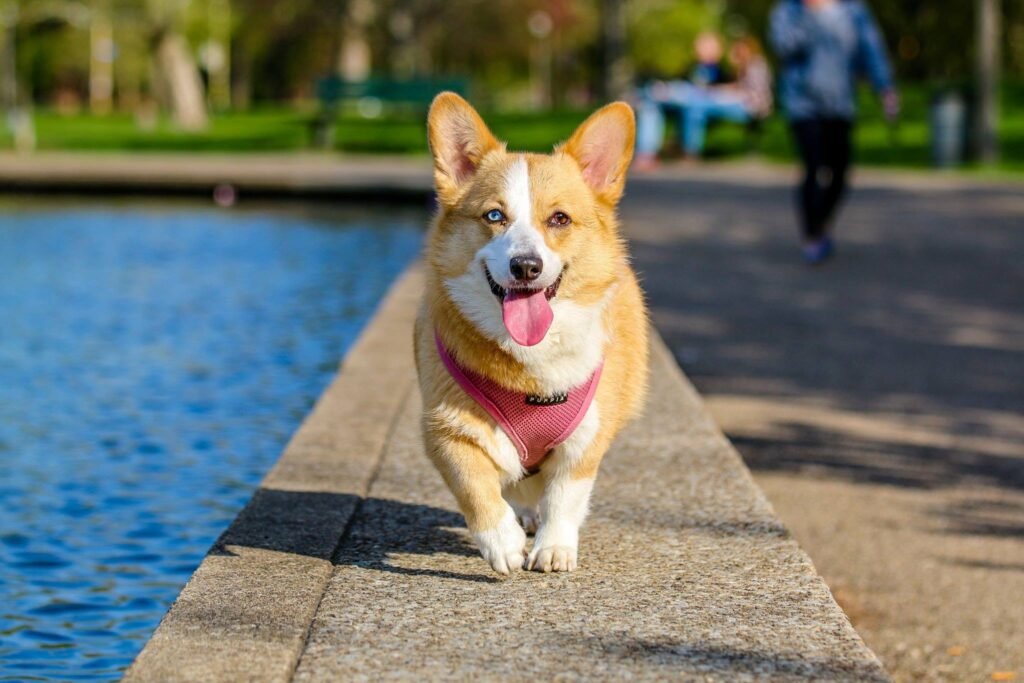Pets bring joy and companionship to our lives, and as pet owners, it’s our responsibility to provide them with the care and attention they need. One crucial aspect of their well-being is playtime. Engaging our pets in regular play sessions, both indoors and outdoors, offers numerous benefits to their overall health and happiness. This article will explore the advantages of indoor and outdoor play for pets and provide ideas for stimulating play activities.
Read More: The Benefits of Regular Exercise for Pets
Contents
Importance of Play for Pets

Playtime is not just a recreational activity for pets; it plays a vital role in their physical and mental development. Regular play sessions can help prevent obesity, boredom, and behavioral problems in pets. It allows them to expend energy, stimulates their minds, and strengthens the bond between pet and owner.
Benefits of Indoor Play
Mental Stimulation
Indoor play provides pets mental challenges that keep their brains active and engaged. Puzzle toys, treat dispensers, and interactive games encourage problem-solving skills, preventing boredom and destructive behaviors.
Physical Exercise
While indoor play may not offer the same level of physical activity as outdoor play, it still contributes to keeping pets active. Activities like hide-and-seek, chasing toys, and playing with feather wands help maintain muscle tone and prevent sedentary lifestyles.
Bonding and Socialization
Indoor playtime allows for one-on-one interaction between pets and their owners. This dedicated time strengthens the bond and nurtures the trust between them. It also helps shy or anxious pets become more comfortable and confident.
Stress Relief
Playing indoors can be particularly beneficial for easily stressed pets with limited mobility. It provides an outlet for their energy, reduces anxiety, and promotes relaxation, leading to a happier and healthier pet.
Benefits of Outdoor Play
Exploration and Enrichment
The great outdoors offers a plethora of new sights, sounds, and smells for pets to explore. Outdoor play allows them to satisfy their natural curiosity, stimulating their senses and providing mental enrichment.
Sensory Stimulation
Nature provides a stimulating sensory experience for pets. The feel of grass beneath their paws, the scent of flowers, and birds chirping all contribute to their overall well-being. These sensory stimuli can enhance their mood and reduce stress levels.
Natural Exercise
Outdoor play provides pets ample opportunities for running, jumping, and engaging in physical activities. It helps maintain a healthy weight and cardiovascular fitness and improves overall agility.
Environmental Engagement
Being outdoors exposes pets to different environments, such as parks or nature trails. This exposure helps them become aware of their surroundings, adapt to various stimuli, and develop better social skills by encountering other animals and people.
Choosing the Right Play Activities

Indoor Play Ideas
When engaging in indoor play, consider the following activities:
- Interactive toys: Use toys that require mental and physical engagement, such as a puzzle or treat-dispensing.
- Laser pointers: Many pets enjoy chasing the elusive red dot created by laser pointers. However, never shine the laser directly into your pet’s eyes.
- Hide-and-seek: Hide treats or toys around the house and encourage your pet to find them.
- Indoor agility: Set up a mini agility course using household items like tunnels, jumps, and weaving poles.
Outdoor Play Ideas
Make the most of outdoor play sessions with these suggestions:
- Fetch: Playing fetch is a classic outdoor activity that provides both physical exercise and mental stimulation for your pet. Use a ball, frisbee, or stick to play this game.
- Nature walks: Take your pet for regular walks in parks or nature trails, allowing them to explore and enjoy different environments.
- Water play: If your pet enjoys water, consider incorporating water games like sprinklers or kiddie pools for them to cool off and have fun.
- Socializing with other pets: Arrange playdates with well-behaved and vaccinated pets to promote socialization and positive interactions.
Read More: The Benefits of Pet Ownership: Improving Health and Well-Being
FAQs
How often should I play with my pet?
The frequency of play sessions depends on your pet’s age, breed, and energy level. Aim for at least 30 minutes to an hour of playtime daily as a general guideline.
Can outdoor play be substituted with indoor space?
While indoor play provides valuable benefits, outdoor space offers unique experiences and opportunities for physical exercise. Ideally, a combination of both indoor and outdoor spaces is recommended for a well-rounded pet lifestyle.
Are there any risks associated with outdoor play?
Outdoor play comes with certain risks, such as encounters with unfamiliar animals, exposure to parasites, or ingesting toxic plants. Ensure your pet is supervised and vaccinated, and be mindful of the environment they play in.
What if my pet doesn’t enjoy playing?
Each pet has unique preferences. If your pet doesn’t seem interested in traditional play activities, try different toys, games, or activities that align with their priorities. Consulting with a veterinarian or animal behaviorist can also provide helpful guidance.
Are there any specific toys or games recommended for indoor play?
Various interactive toys are available for indoor play, such as treat-dispensing puzzles, feather wands, or catnip-filled toys for cats. Consider toys that encourage problem-solving, like puzzle balls or squeaky dog toys.
Conclusion
Indoor and outdoor playtime is essential for the well-being of our beloved pets. Indoor play provides mental stimulation, physical exercise, bonding opportunities, and stress relief. On the other hand, outdoor play offers exploration, sensory stimulation, natural movement, and environmental engagement. By incorporating various play activities into their routines, we can ensure that our pets lead healthy, happy, and fulfilling lives.




















